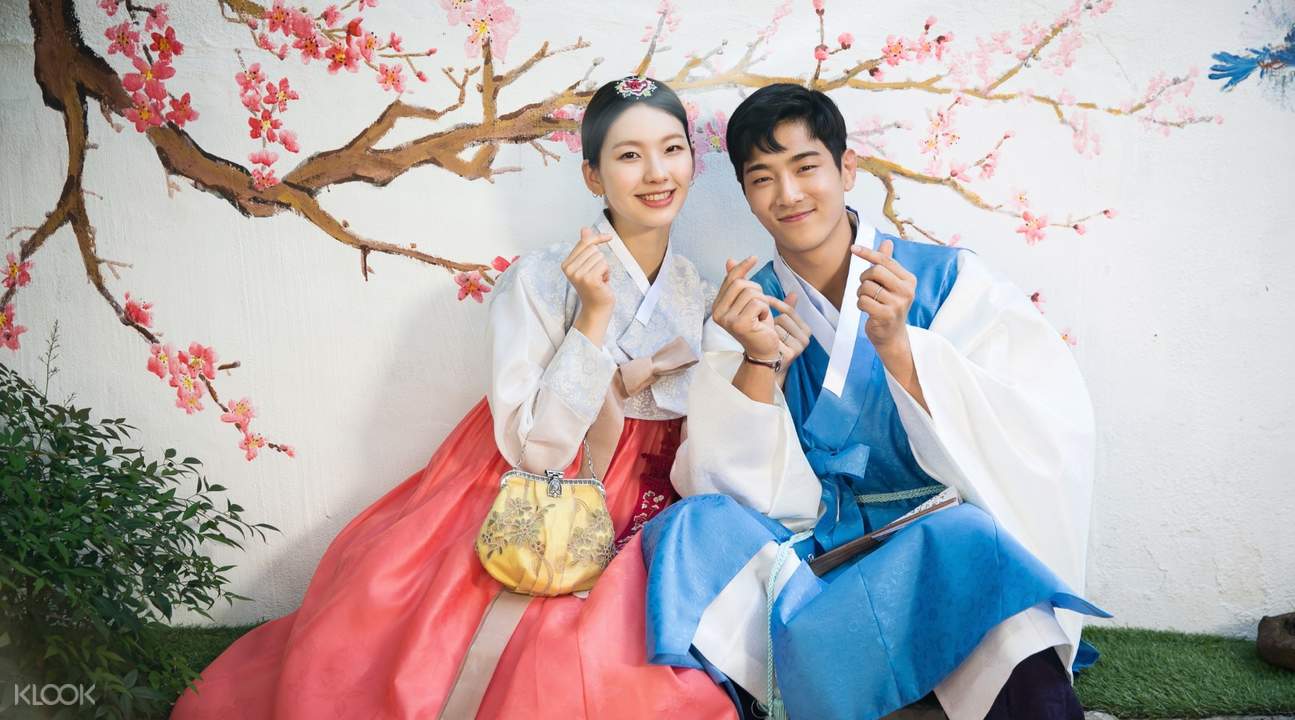
Annyeong, yeoreobun! ^^ How have you been faring during this global pandemic situation? Hope you are all safe and taking care of yourself at home!
So, how much do you know about the South Korean culture? According to Wikipedia, the culture of Korea is the shared cultural and historical heritage of Korea and southern Manchuria. As one of the oldest continuous cultures in the world, Koreans have passed down their traditional narratives in a variety of ways. Without further ado, let’s dive deep into the traditional clothes of South Korea: Hanbok!
A hanbok (Hangul: 한복; Hanja: 韓服) is the traditional Korean outfit for semi-formal or formal occasions. Up till 100 years ago, the Hanbok was worn daily, but in the modern society, Koreans only wear Hanbok during special occassions and especially during traditional celebrations such as New Year, wedding ceremonies, a child’s first birthday, and funerals.
Hanbok is the national costume for South Korea, and now a siginificant representation of the culture and identity of South Koreans. In 1996, the South Korean Ministry of Culture, Sports and Tourism even established “Hanbok Day” on 21st October to spur motivation for South Korean citizens to wear hanbok. Now, mark down your calendars chinggu(s)! ^^
A normal hanbok is divided into few parts – for women: the jeogeori (shirt) and chima dress; for men: jeogeori and baji (baggy pants).

Do you know that in ancient times, you can differentiate the social class of the people just by looking at the hanbok they wear? Let’s take dive into the classifications by looking at 3 most popular samples below!
The Hwarot or Hwal-Ot (Hangul: 활옷) was the full dress for a princess and the daughter of a king by a concubine, formal dress for the upper class, and bridal wear for ordinary women during the Goryeo and Joseon dynasties. It is elaborately embroidered long robe with long and wide sleeves to cover the wearer’s hands.
Now, it is mainly worn during wedding ceremonies.
The Wonsam (Hangul: 원삼) a female ceremonial topcoat in hanbok, Korean traditional clothing. It was worn by queens, high-ranking court ladies, and royalty during the Joseon dynasty of Korea (1392-1910). It is also called daeui (大衣, big clothing), daesu (大袖, wide sleeves) and jangsam (長衫, long clothing).
The queen, princess consort, and consort to the first son of the crown prince wore it as a soryebok, a robe for small ceremonies, while wives of high officers and sanggung (court matrons) wore it as daeryebok, a robe for major ceremonies.


Dangui (Hangul: 당의; Hanja:唐衣) is a type of upper garment which was worn for ceremonial occasions during the Joseon Dynasty. It was worn as a simple official outfit or for small national ceremonies while court ladies wore it as a daily garment.
It is theorised dangui dates back to the Korean Three Kingdoms period (57 BC – 668 AD) when a clothing system of China was introduced to Korea. The letter, dang (唐) refers to Chinese Tang Dynasty (618 – 907), so dangui may have been adapted from its clothing along with other ceremonial robes such as hwarot and wonsam.
TL;DR – just take a look at the differences in the picture below!

Well, hope that you have understood better about the different types of Hanbok, and appreciate this culture from South Korea! If you have any comments/ suggestions, do drop us a feedback below! 😉
(Author’s own personal little dream is to actually have her future honeymoon trip at South Korea, so she can wear Hanbok together with her future husband :P)
3 replies on “Traditional Costumes: Hanbok”
[…] sure to stop by the Cultural Experience Hall to participate in a Korean tea ceremony or try on a hanbok, the country’s national dress. (You can click on the links for further details that were […]
LikeLike
Koreans who enjoy parties have a wider variety of clubs and bars.
Encompassng, Gangnam is eminent for clubs and the most popular is 강남룸싸롱
LikeLiked by 1 person
Yes! Gangnam is like Times Square in Seoul.
LikeLiked by 1 person